Golf is a notoriously difficult sport to master. Even the best players in the world have days where they struggle to break 80. So, how long does it take to get good at golf? The answer to that question depends on a variety of factors, including your natural talent, practice habits, and dedication.
If you’re a complete beginner, it’s going to take some time before you start seeing any real improvement. Don’t get discouraged if you’re not shooting in the 60s after a few months of practice. It takes most people years to develop the skills necessary to play consistently good golf.
Even if you’re not a natural, there are things you can do to speed up the process. Practicing regularly is the key to getting better at any sport, and golf is no different.
If you can dedicate an hour or two each day to hitting balls at the driving range, your progress will be much faster than someone who only practices once a week.
In this blog post, golf experts will explore some of the things you can do to improve your golf game and make the journey to becoming a scratch golfer a little shorter.
Table of Contents
What Is Considered A Good Golf Score?
To figure out how long it takes to become excellent, you must first understand what “good” means in the context of golf. When it comes to golf, good is a somewhat subjective term.
If you’re a high-end private country club with lots of successful and athletic individuals, it could mean that you’re a great golfer.
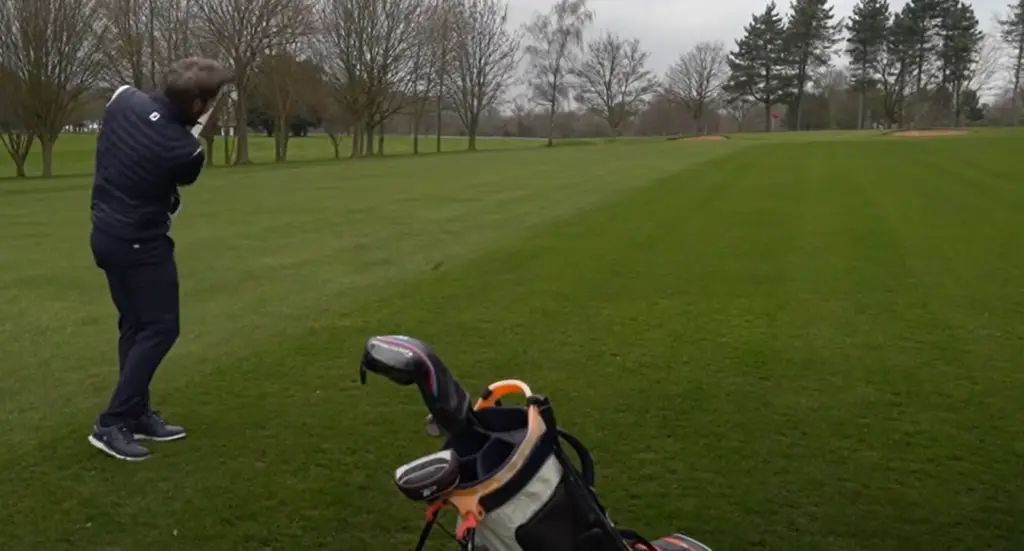
Even if you can’t break one hundred, if you can drive the ball 260 yards in a charity game, everyone may believe that you’re great.
Many individuals believe that “good” in golf means being able to break 80. When you can shoot 80 or less, you are generally on the road, making a lot of pars.
You will have a lot of fantastic photos and a few terrible ones, but your game is generally decent.
Those who shoot 90 and above will have an abundance of poor holes, some double bogeys, and so on.
The score of a player’s round will appear to be simpler, more in command, and, on average, better if they shoot under 80 [1].
How Long Does It Take to Get Good at Golf?
It may take anywhere from one to two years for most individuals to break 80 once they start playing the game. If you’ve been playing for more than two years, most experts believe that with the right teaching, clubs, and work ethic, you can reach 80 in six to twelve months.
Reaching a handicap of zero is something that only the most skilled golfers can achieve. The average player will never be able to play par golf and will always shoot above par. Even professional golfers only shoot par or below par less than 20% of the time. So, if you’re looking to get really good at golf, it might take a lifetime.
One thing is for sure, though: the more you play, the better you’ll get. Golf is a game that rewards dedication and practice.
Factors That Determine if You Will Be Good at Golf:
Hand-Eye Coordination
This is probably the most important factor. If you have poor hand-eye coordination, you will likely not be able to hit the ball well consistently. The balls you’ll encounter on the course aren’t very big, and your club must make contact with them at the perfect time to send them in the direction you desire [3].
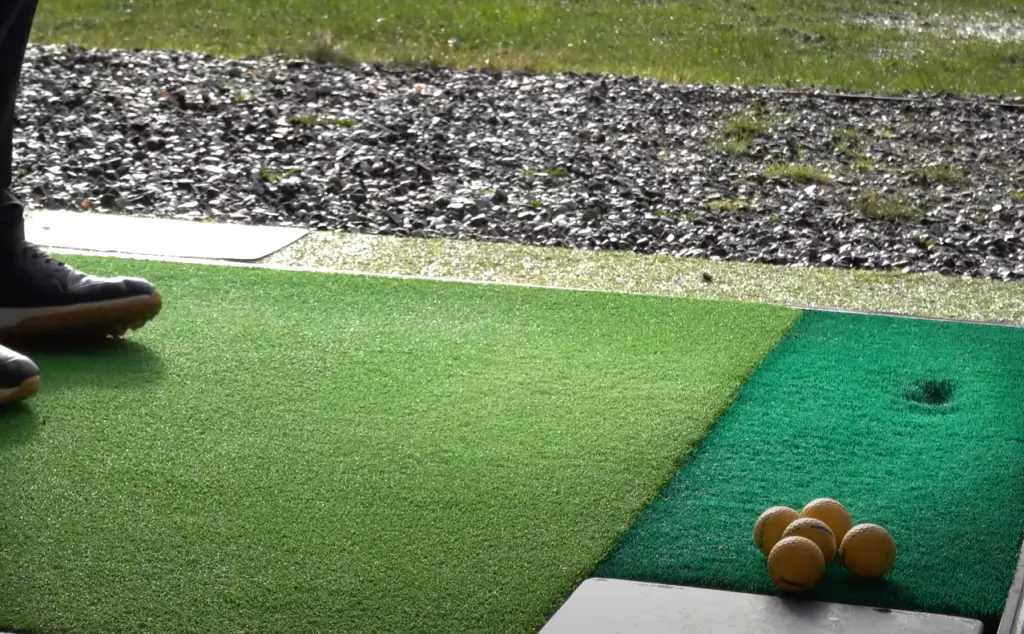
However, if you have good hand-eye coordination, you have a much better chance of becoming a good golfer.
There are ways to improve your hand-eye coordination, such as by playing other sports or doing eye exercises.
If you have poor hand-eye coordination, don’t despair – there are still things you can do to try and improve it.
How Much Time You Have to Practice
The answer to this question is twofold:
- The first factor is how much time you have to dedicate to practicing your golf game;
- The second factor is how often you can get out on the course or driving range to practice. If you only have a few hours each week to devote to practicing your golf game, it will naturally take you longer to see significant improvement than if you had more time available;
Likewise, if you live in an area with limited access to courses or driving ranges, it will also take longer for you to see significant improvement. However, even with limited time and resources, everyone has the potential to improve their golf game if they are willing to put in the effort.
One of the best ways to make use of limited practice time is to focus on specific areas of your game that need improvement.
For example, if you are struggling with your tee shots, spend some extra time at the driving range working on your swing. Or if you can’t seem to make it onto the green in regulation, spend some time practicing your approach shots.
By identifying the areas of your game that need improvement and focusing on those areas, you can make the most of limited practice time and see significant improvement in your game over time.
Physical Strength and Flexibility
One important factor in improving your golf game is physical strength and flexibility. Depending on your current level of fitness, it may take some time to build up the muscle strength and endurance required for golf. However, even small improvements in these areas can make a big difference in your game.
The misconception that physical strength wasn’t necessary when playing golf was debunked by the apparent relaxation of the game.
Strengths are usually more essential for that first swing when most players want to reach as far as possible. Sometimes, a single extra push is a difference between a good shot and a complete failure.
You may need to spend some time stretching and doing other exercises to improve your range of motion before you see a significant improvement in your game.Mindset
Your mindset is also an essential factor in how quickly you improve at golf. If you approach the game with a positive attitude and a willingness to learn, you will be more likely to see progress than if you are negative or resistant to change.
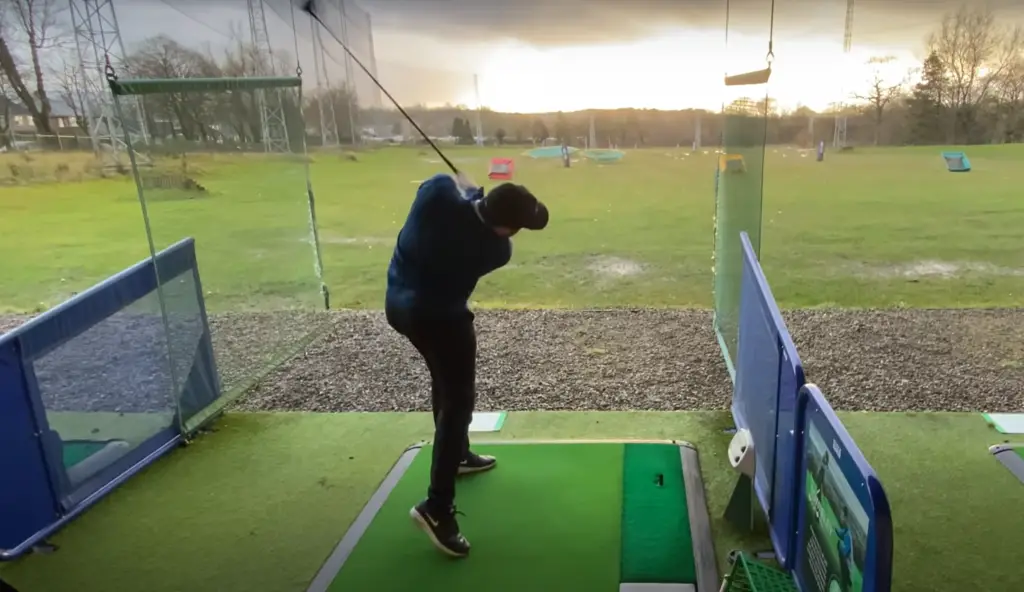
It can be easy to get discouraged when learning a new sport, but it is important to remember that everyone starts as a beginner. Everyone has to put in the time and effort to improve their skills.
If you keep your head up and focus on enjoying the game, you will find that your skills improve much faster than if you are constantly berating yourself for every mistake.
Remember, golf is supposed to be fun! So relax and enjoy the process of learning something new.
Where Are the Best Places to Learn Golf
On the Course
Out on the course is one of the greatest locations to learn golf. It’s widely considered to be the only area in which you can truly feel like a golfer and respond to things like weather and terrain in real-time.
Depending on how many obligations you already handle in your daily life, it might not be possible to participate in the course. However, if you want to improve, you should seize the chance as much as possible [4].
The other great thing about learning golf on the course is that you can find mentors. Many courses have teaching professionals who can help you learn the game, and there are also plenty of experienced players who are always willing to offer advice. There’s no shortage of people who want to help you get better at golf, so take advantage of that!
In a Simulator
If you don’t have the time to commit to the course, or if you want to supplement your course learning with some extra practice, then a simulator is a great option.
They’re also very useful for practicing specific shots and working on your game without having to worry about things like the weather.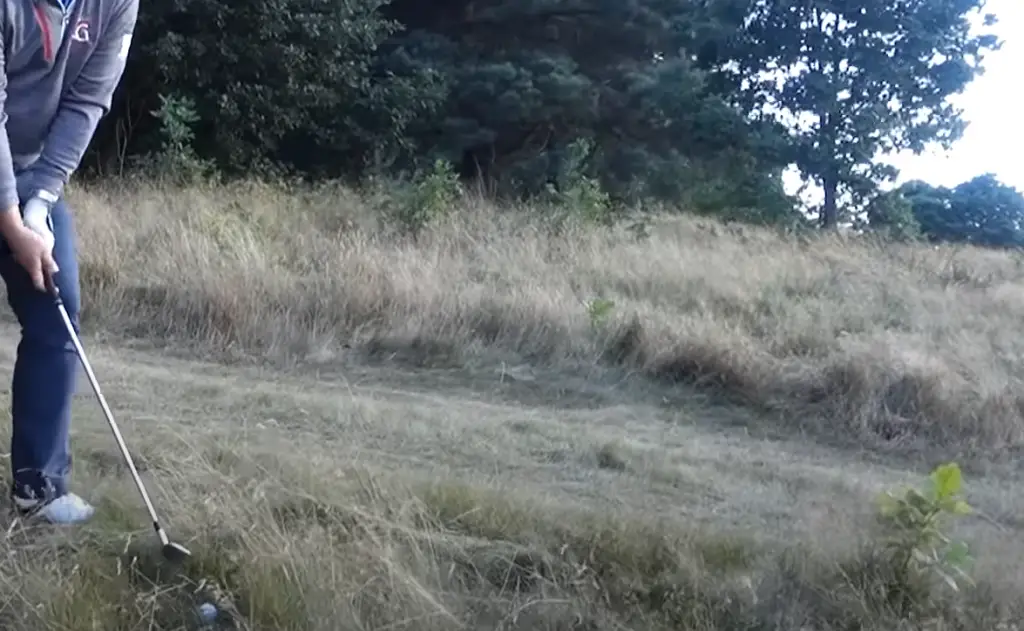
One thing to keep in mind with simulators is that they won’t teach you how to walk the course or read greens. For that, you’ll need real-life experience. But if you want to improve your swing and get some extra reps in, then a simulator is a great option.
At a Driving Range
This is a great option if you want to work on your swing without having to worry about things like course management.
There’s a lot that the driving range can’t take into account, such as how changing terrain on the different courses might affect your game, but it’s still beneficial practice. Swinging and standing for a few hours may appear to be overly monotonous, but all of it helps to enhance your strength, posture, and aim. It can also be very relaxing.
A driving range can also be a great place to meet other golfers and get some advice from experienced players. Many ranges have teaching professionals who can help you with your game, so it’s definitely worth checking out.
YouTube Tutorials
While YouTube can be a great resource for many things, golf is not one of them. The problem with learning from YouTube videos is that everyone’s swing is different. What works for one person might not work for you. In addition, the quality of golf instruction on YouTube is very hit or miss.
You might find a great video from a PGA teaching professional, or you might find a terrible video made by some guy in his backyard. It’s hard to know what’s good and what’s not when it comes to learning from YouTube videos.
Paid Lessons
If you have the money to spare, hiring a golf instructor is always an option. Golf instructors can help you learn the basics and improve your swing. They can also give you feedback on your progress and help you troubleshoot any problems. However, lessons can be expensive, so this may not be an option for everyone.
At the very least, once you’ve found a driving range or a course where you can practice your skills, be sure to pay close attention to the following seven blunders. A skilled instructor might be able to spot what you’re missing merely by giving it another viewpoint.
On Websites
There are a lot of great golf instructional videos on professional websites. You can also find tips and drills from professional golfers and instructors. However, it can be difficult to find good quality content among all the noise.
The best way to use these resources is to find a specific drill or tip that you want to work on and then search for a video that covers that topic.
Once you’ve found a few helpful videos, make sure to take some time to practice what you’ve learned. Drills and tips are only helpful if you actually put them into practice.
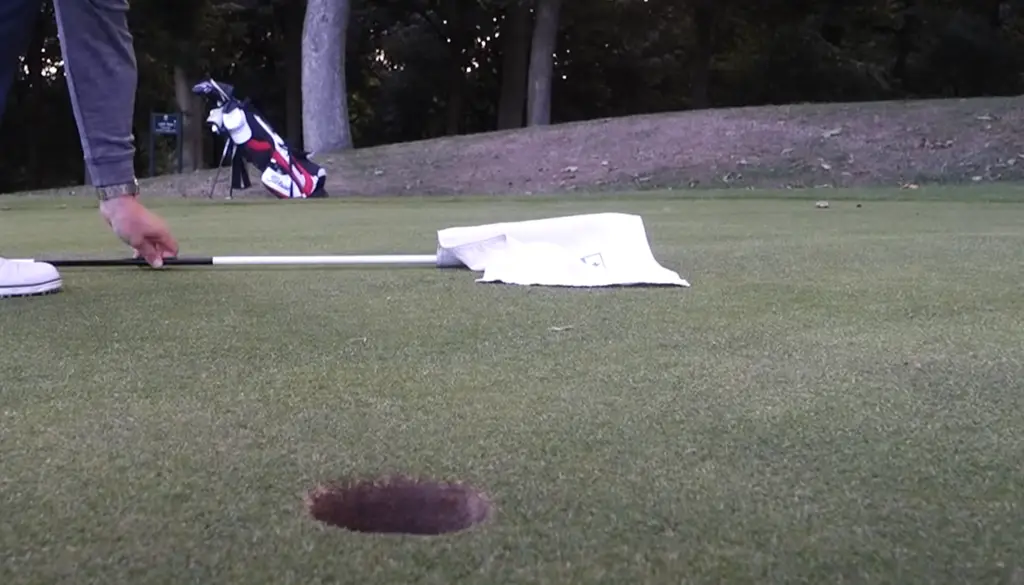
If you’re serious about learning how to play golf, your time would be better spent taking lessons from a qualified instructor.
If you’re just starting out, it’s important to have realistic expectations about how long it will take to get good at golf. It’s not going to happen overnight. It takes time, practice, and patience to develop the skills necessary to play this game well.
How to Get Good at Golf Fast: Expert Tips
Short Game is Vital
This includes anything from putting to chipping to pitching. A great way to improve your short game is by practicing at a local driving range or golf course.
Many courses have practice areas where you can work on your swing without paying for a round of golf. You can also find countless instructional videos online that can help you perfect your technique.
Find an Online Instructor
If you want to get good at golf quickly, one of the best things you can do is find an online instructor. There are many great instructors who offer their services online, and they can help you learn the game faster than you ever thought possible.
A quick Google search will reveal a long list of instructors that offer Skype or video lessons. Once you find one that you like, all you need to do is book a few sessions and start learning!
While there are plenty of great instructional videos out there, nothing beats working with a real live person. An online instructor can give you personalized feedback and help you correct any bad habits that you might have picked up along the way.
Train for Speed
If you want to get good at golf, you need to start training for speed. Many amateur golfers swing too slowly, which leads to all sorts of problems. By increasing your clubhead speed, you’ll be able to hit the ball further and straighter than ever before [5].
There are a few different ways that you can increase your clubhead speed.
One is by using a heavier club during your practice swings.
Another is by using a resistance band to add resistance to your swings.

And finally, you can try using a weighted vest or ankle weights during your swings.
Increase Your Practice Time
If you’re serious about getting good at golf, you need to start increasing your practice time. Many amateur golfers only practice a few times per week, but if you want to take your game to the next level, you need to start practicing every day.
The more time you can devote to practicing, the faster you’ll improve.One great way to make the most of your practice time is by using a launch monitor. A launch monitor is a piece of technology that tracks all sorts of data about your swings (such as clubhead speed, ball speed, and trajectory).
Utilize Swing Training Aids
If you want to get good at golf, you need to start utilizing swing training aids. Swing training aids are devices that can help you improve your swing mechanics.
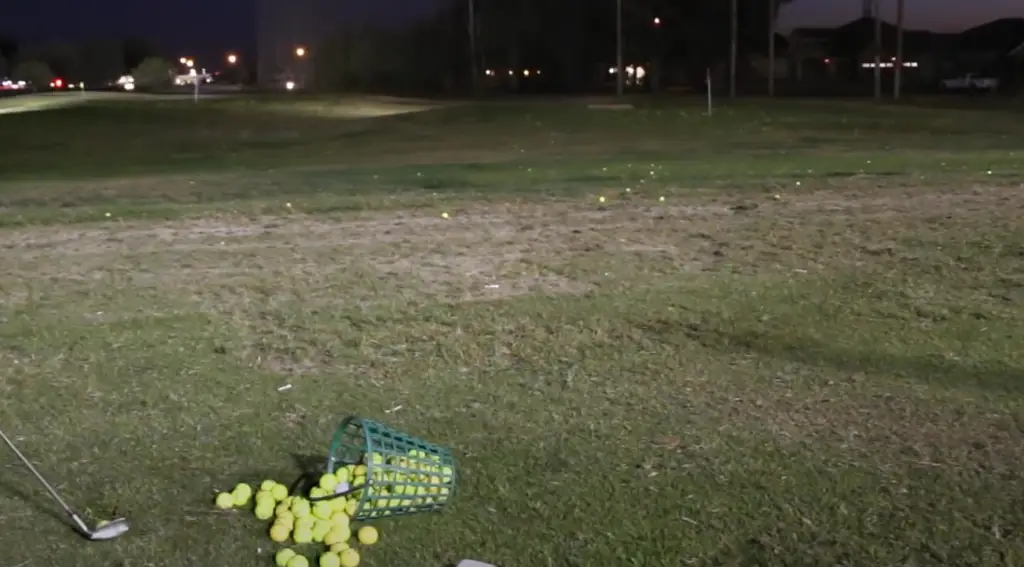
One of the most popular swing training aids on the market is the Orange Whip. The Orange Whip is a flexible whip that helps you develop a smoother and more consistent swing. It’s also great for developing power and increasing clubhead speed [6].
Know your Distances Watch the Pros Play
One of the best ways to learn how to play golf is by watching the pros play. Not only will you get to see first-hand how they swing the club, but you’ll also get an idea of how they approach different shots.
You can find plenty of professional golf tournaments on TV, or you can even go to a live event if you’re able to. Either way, watching the pros play is a great way to improve your own game.
As you watch, pay close attention to their stance, grip, and swing plane. Also, take note of how they choose their clubs and where they place their feet on each shot. By emulating the pros, you’ll be able to quickly improve your own game.
FAQ
How long does it take to become average at golf?
The average golfing ability takes about two years to develop. This timeline can be expedited with professional coaching or by playing frequently.
Is golf hard to get good at?
Golf is a difficult sport to master but with enough practice, it can be greatly rewarding. It takes dedication and time to get good at golf, but the payoff can be great.
If you’re dedicated to learning the game and putting in the time, you can become a skilled golfer. While there’s no one answer to how long it takes to get good at golf, most players see improvement after years of practice and playing. With enough focus and drive, anyone can get good at golf — it just takes some time and patience.
How often should I play golf to improve?
Playing golf consistently is the key to developing your skills. Playing once a week will help you maintain your abilities, but won’t make you any better. To see real improvement, you should aim to play at least three times per week.
Practicing your swings in between games is also crucial for driving down your scores. If you can commit to 30 minutes of practice per day, you’ll start seeing results in no time.
How many lessons does it take to get good at golf?
There is no set number of golf lessons needed to become competent at the game. Unfortunately, each individual will have a different route to success. To be fit for the golf course on average, you’ll need approximately 3-5 lessons. Don’t quit taking classes once you believe you’re ready to hit the course [7].
How do you know if you’re good at golf?
If you’re shooting par or better on a regular basis, then you can consider yourself a good golfer.
If you’re frequently breaking 80, then you’re an excellent golfer.
However, if your goal is to simply enjoy the game and socialize with friends, then any level of ability is good enough.
While there’s no one answer to how long it takes to get good at golf, most players see improvement after years of practice and playing. With enough focus and drive, anyone can get good at golf — it just takes some time and patience.
Is golf a tough sport?
Golf can be as difficult or easy as you make it. The game has many different levels and can be enjoyed by players of all abilities.
If you’re looking for a challenge, then golf can be tough. But if you’re just looking to enjoy a round with friends, then golf can be quite easy.
At the end of the day, golf is what you make of it. If you’re dedicated to becoming a skilled player, then it will take time and effort. But if you’re just looking to enjoy a leisurely game, then golf can be quite simple. No matter your level of ability, golf is a great game for everyone.
How should a beginner hold a golf club?
There are a few different ways to grip a golf club, and it is important to find the grip that feels the most natural and comfortable for you.
Many people recommend the “overlapping” grip, which is when the pinky finger on your trail hand overlaps with the index finger on your lead hand.
Others prefer the “interlocking” grip, where the pinky finger of your trail hand interlocks with the index finger of your lead hand.
Experiment with both grips and see which one works best for you [8].
Once you have chosen a grip, it is important to make sure that you are holding the club in such a way that you do not tense up your muscles. Your arms should hang naturally from your shoulders, and you should grip the club lightly with your fingers. You want to avoid clenching the club too tightly, as this will only make it harder to swing smoothly.
Is playing golf expensive?
The average cost of golf equipment is $500, and the average green fee is $50. You can find many courses that are cheaper than this, but you will also find some that are much more expensive.
If you play golf once a week, it will take about two years to become proficient. If you play twice a week, you can expect to become proficient in one year.
However, if you want to be a scratch golfer, it will take five to seven years of consistent practice. Scratch golfers make up only about three percent of all golfers.
How far should you hit a 7 iron?
This depends on many factors, such as your clubhead speed, the loft of the club, and the conditions of the course.
A general rule of thumb is that a seven iron should travel between 155 and 175 yards for men, and 140 to 160 yards for women.
Of course, there are always exceptions to this rule. For example, Tiger Woods has been known to hit a seven iron over 200 yards on occasion [9].
Can beginners go on golf courses?
Yes, they can, but they might find it more difficult than playing on a driving range or executive course.
Most golf courses have what is called a “forward tee” that is meant for beginners. This tee is usually closer to the hole than the other tees on the course.
Beginners should also be aware of the etiquette of golf before heading out to a course. For example, it is considered rude to talk while someone else is swinging.
Useful Video:How Long Will it Take an 18.2 Handicap Golfer to Get to Scratch? This is #ProjectScratch
References:
- https://www.golfcartreport.com/how-long-does-it-take-to-get-good-at-golf/
- https://golfjourney365.com/how-long-does-it-take-to-get-good-at-golf-7-quick-tips/
- https://stitchgolf.com/blogs/a/how-many-years-to-get-good-at-golf
- https://stitchgolf.com/blogs/a/how-many-years-to-get-good-at-golf
- https://golfjourney365.com/how-long-does-it-take-to-get-good-at-golf-7-quick-tips/
- https://orangewhipgolf.com/
- https://www.golfcartreport.com/how-many-golf-lessons-should-a-beginner-take/
- https://topgolf.com/uk/blog/post/how-do-i-hold-a-golf-club-properly/
- https://www.golflink.com/tips_5459_average-distance-each-golf-club.html







Leave a Reply